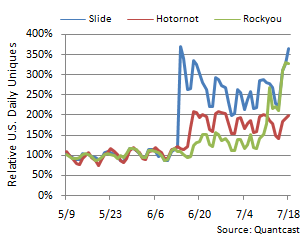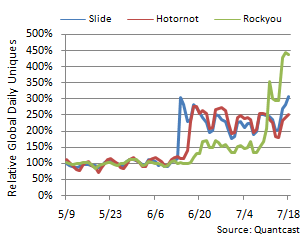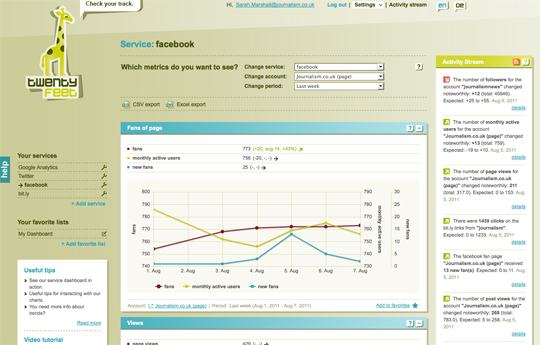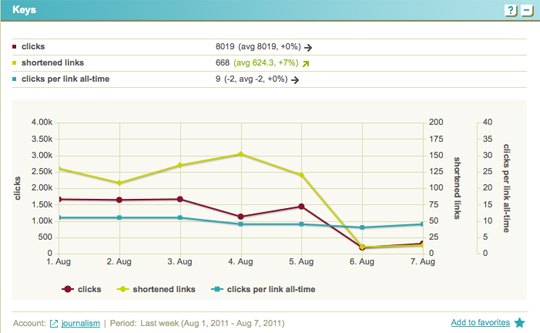 Facebook, Facebook, Facebook, it’s all I ever hear. But could research from Quantcast finally have made the tangible link between the social site and others that news publishers were waiting to hear?
Facebook, Facebook, Facebook, it’s all I ever hear. But could research from Quantcast finally have made the tangible link between the social site and others that news publishers were waiting to hear?
It claims that developing widgets for the site results in increasing site traffic for those developing the apps – ‘The Facebook Effect’
“Quantcast found a common dramatic increase in traffic for those publishers that have built and deployed widgets (“applications”) on the Facebook platform.”
“Just six weeks into Facebook’s open platform initiative, we are seeing striking results,” said Konrad Feldman, co-founder and CEO, Quantcast Corporation. “The Facebook platform is driving substantial incremental traffic to application publishers’ Web sites, as consumers find new routes to exploring their wares.”
The Quantcast charts below (figures 1 and 2) reveal the relative growth in daily uniques to three leading widget publishers, each with multiple applications running on the Facebook platform. Since Facebook’s open platform initiative began on May 25th of this year:
- Slide, the leading personal media network, has more than tripled its global reach in Web site traffic.
- Slide grew domestic U.S. daily unique visitors from approximately 312,000 to more than 1.1 million, an increase of 265 percent.
- Slide grew global daily unique visitors from approximately 753,000 to more than 2.3 million, an increase of 207 percent.
- HOTorNOT, an early leader in social media, has doubled its global reach in Web site traffic.
- HOTorNOT grew domestic U.S. daily unique visitors from approximately 182,000 to more than 350,000, an increase of 98 percent.
- HOTorNOT grew global daily unique visitors from approximately 289,000 to more than 722,000, an increase of 152 percent.
- RockYou, creator and distributor some of the most popular self-expression widgets on the Web, has more than tripled its global reach in Web site traffic.
- RockYou grew domestic U.S. daily unique visitors from approximately 145,000 to more than 521,000, an increase of 228 percent.
- RockYou tripled its global reach, increasing global unique visitors from approximately 286,000 to more than 1.3 million, an increase of 339 percent.
Figures 1 and 2 reveal the relative growth in daily unique visitors for domestic U.S. and Global audiences, respectively:


Now, just ’cause it worked for these few, doesn’t say to me that it will work for others. Yet it shows that those talking Facebook on its own terms are most likely to reap the benefits.


 Facebook, Facebook, Facebook, it’s all I ever hear. But could
Facebook, Facebook, Facebook, it’s all I ever hear. But could 
